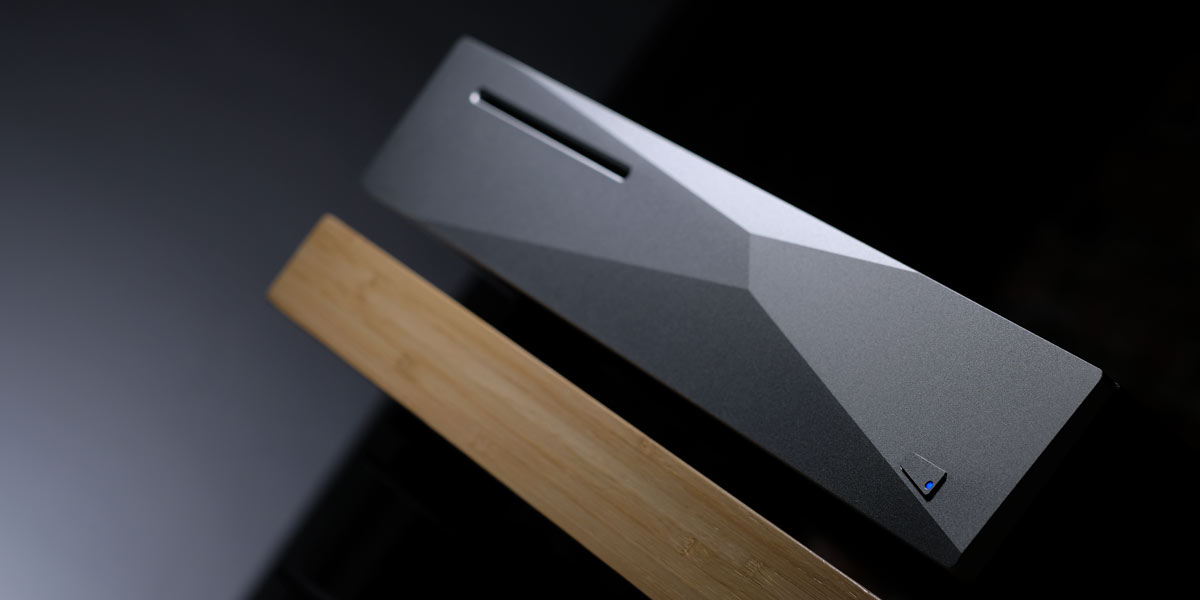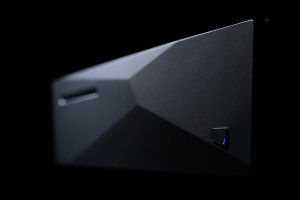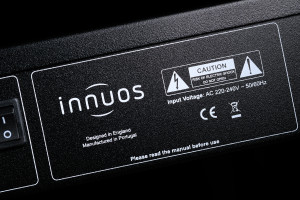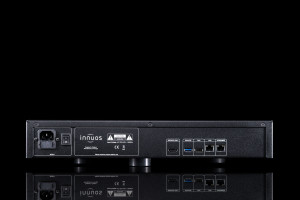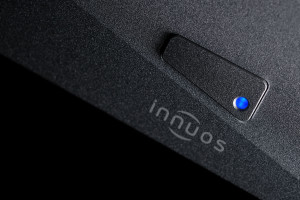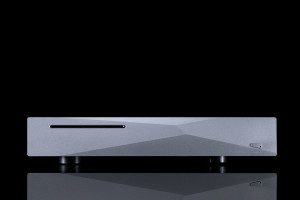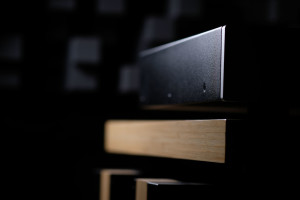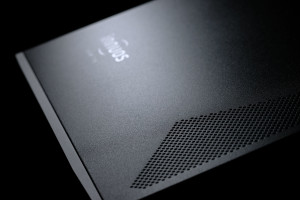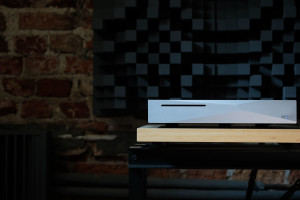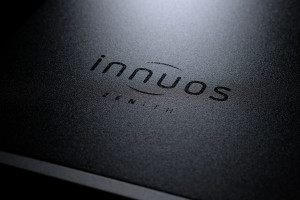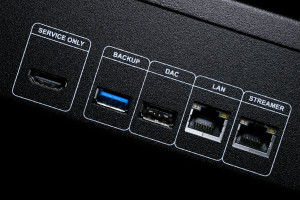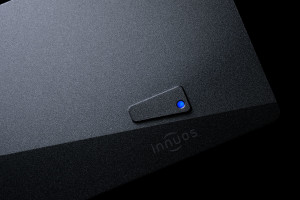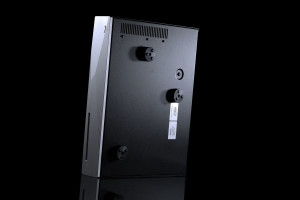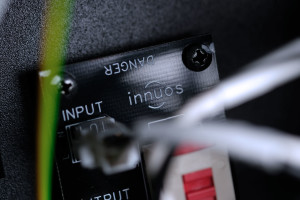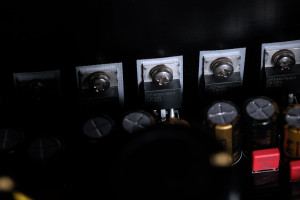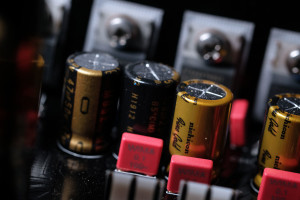Innuos is a specialist company focused on server/streamer solutions targeted at audio enthusiasts. One could say that this is nothing out of ordinary these days, however this particular audio house exploded in popularity in recent years. Innuos ZENith Mk3 was sent my way, just so I could investigate on my own why this happened. Enjoy!
Introduction
Have you ever tried putting together a regular multi-purpose PC? If you aren’t tech-savvy, the hardware part might strike you as complex and rather difficult, but in reality it’s not. To simplify, all you need is a power supply and a motherboard to accommodate a RAM stick or two, hard drive, and a CPU plus some cooling on it. All listed components connect in just one way, and then like so land inside of a case. If you leave brute force at the door and act carefully, the odds of failure are slim to none. Then a keyboard, mouse, monitor and a thumb drive with your OS of choice go in. All this sorted and powered should result in a nice setup screen, which will cruise you through the OS installation process one click at a time. Easy-peasy.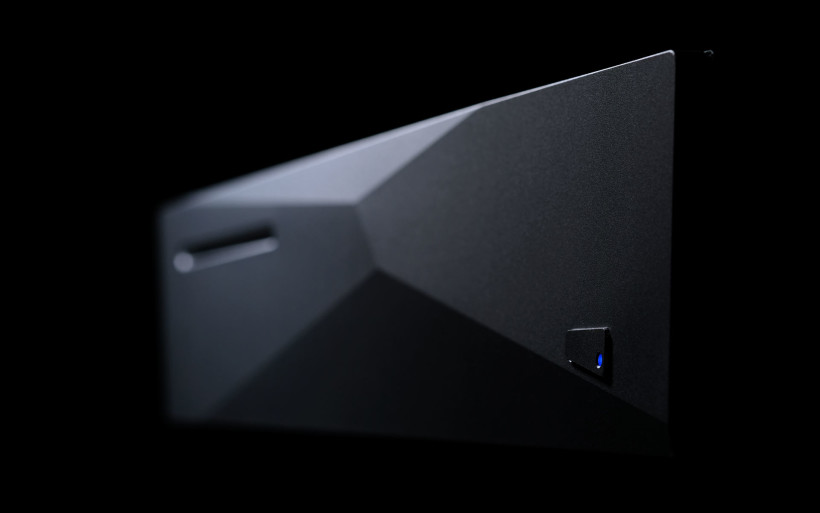 Now, have you ever tried building a PC focused solely on music playback? The assembly part as described above is quite similar if not the same, on the contrary to pretty much everything else. Low noise as top priority renders regular components feasible but not ideal. Now linear PSUs, cherry-picked motherboards, low-voltage CPUs, passive radiators and low-profile aluminium enclosures come into play. You’ll need to adjust BIOS and it’s more than likely that your regular OS isn’t up to scratch either. The one you’ll be running now has to be stripped literally from every process, aside bare minimum to actually work and execute tasks only related to music. It’s essentially a skeleton of what you previously had. If you happen to be a die-hard geek with lots of spare time to kill, by all means you can mint an audiophile computer on your own, tweak it accordingly and overcome any obstacles along the road. If you’re into this sort of thing, probably you’ve done that already and kudos to you. But if like me you neither seek DIY challenges nor have time to learn how to face them head on, a turnkey platform by a credible specialist company is the way to go. Here’s where this report’s Innuos steps in, they’re the geeks you and me are not.
Now, have you ever tried building a PC focused solely on music playback? The assembly part as described above is quite similar if not the same, on the contrary to pretty much everything else. Low noise as top priority renders regular components feasible but not ideal. Now linear PSUs, cherry-picked motherboards, low-voltage CPUs, passive radiators and low-profile aluminium enclosures come into play. You’ll need to adjust BIOS and it’s more than likely that your regular OS isn’t up to scratch either. The one you’ll be running now has to be stripped literally from every process, aside bare minimum to actually work and execute tasks only related to music. It’s essentially a skeleton of what you previously had. If you happen to be a die-hard geek with lots of spare time to kill, by all means you can mint an audiophile computer on your own, tweak it accordingly and overcome any obstacles along the road. If you’re into this sort of thing, probably you’ve done that already and kudos to you. But if like me you neither seek DIY challenges nor have time to learn how to face them head on, a turnkey platform by a credible specialist company is the way to go. Here’s where this report’s Innuos steps in, they’re the geeks you and me are not.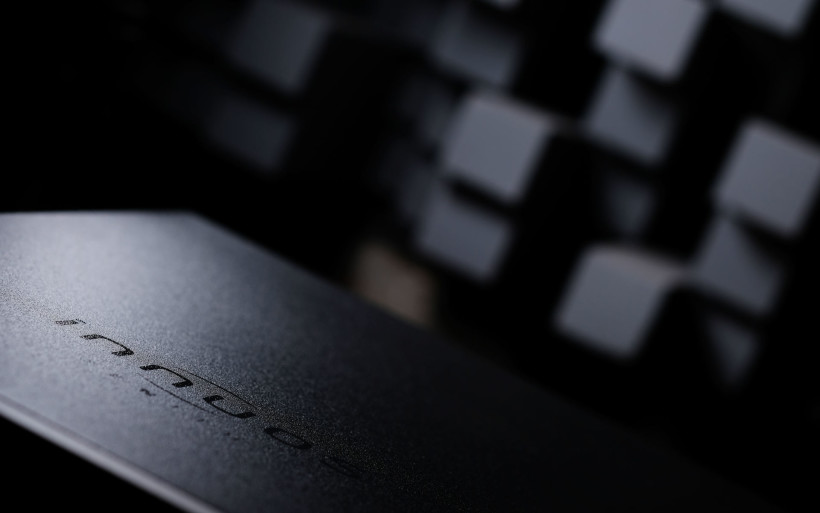 I saw a product by Innuos for the first time in Munich 2018. It sat right in-between Kii Three speakers augmented by BXT modules in a dark room located in one of MOC’s halls. Although these monitors had all my attention back then, in just two years the former operation gained street cred massive enough to become quite unmissable. The Innuos’ local reseller AVcorp approached me recently to see whether I’d be interested in reviewing any of its devices, but what happened shortly after was quite unexpected. Early on I imagined this report’s company as a fairly small boutique workshop. But the first hint of it outside this realm came in form of an introductory mail from the event manager Amanda, followed by a proper call the two of us had several days later. The next talk involved Innuos’ CTO/co-founder Nuno Vitorino, who keenly answered all my technical questions, and asked about digital bits of my setup. Precise schedule plus formal utmost courteous communication channel, spelled corporate vibe typical for professional enterprises with everything buttoned up. This wasn’t the audio business as usual.
I saw a product by Innuos for the first time in Munich 2018. It sat right in-between Kii Three speakers augmented by BXT modules in a dark room located in one of MOC’s halls. Although these monitors had all my attention back then, in just two years the former operation gained street cred massive enough to become quite unmissable. The Innuos’ local reseller AVcorp approached me recently to see whether I’d be interested in reviewing any of its devices, but what happened shortly after was quite unexpected. Early on I imagined this report’s company as a fairly small boutique workshop. But the first hint of it outside this realm came in form of an introductory mail from the event manager Amanda, followed by a proper call the two of us had several days later. The next talk involved Innuos’ CTO/co-founder Nuno Vitorino, who keenly answered all my technical questions, and asked about digital bits of my setup. Precise schedule plus formal utmost courteous communication channel, spelled corporate vibe typical for professional enterprises with everything buttoned up. This wasn’t the audio business as usual. The word ‘Innuos’ cleverly connects innovation and openness. The company itself was officially established in 2009, is privately owned and doesn’t rely on external investors’ funding. It hires 25 staff members, has its head office located in Portugal’s southernmost region Algarve plus offices Lisbon and UK’s Warwick, whereas a separate sales manager handles North America. Team Portugal’s rather minimalist portfolio had me curious given their major recognition spike. It features only four core products, whereas I was introduced to the opportunity of reviewing the second best – Innuos ZENith Mk3.
The word ‘Innuos’ cleverly connects innovation and openness. The company itself was officially established in 2009, is privately owned and doesn’t rely on external investors’ funding. It hires 25 staff members, has its head office located in Portugal’s southernmost region Algarve plus offices Lisbon and UK’s Warwick, whereas a separate sales manager handles North America. Team Portugal’s rather minimalist portfolio had me curious given their major recognition spike. It features only four core products, whereas I was introduced to the opportunity of reviewing the second best – Innuos ZENith Mk3.
Build
Innuos ZENith Mk3 arrived in a double cardboard filled with a styrofoam housing, precisely cut to accommodate the main dish wrapped in a cloth bag. Several compartments found in there stored necessary cables and a handy manual, which covered all today’s key functionalities and connections in a very approachable and informative way. Innuos’ own graphics on the outer box and finely executed view inside made a solid first impression, and implied attention to small things typical for large-scale operations well beyond the DIY stage. Some manufactures decades long in the business are still stuck in there, but team Innuos got this part right. Considering what they’re known for in the first place, that’s hardly a surprise. What they’ve been selling is audiophile performance purposely clad in modern industrial packages after all.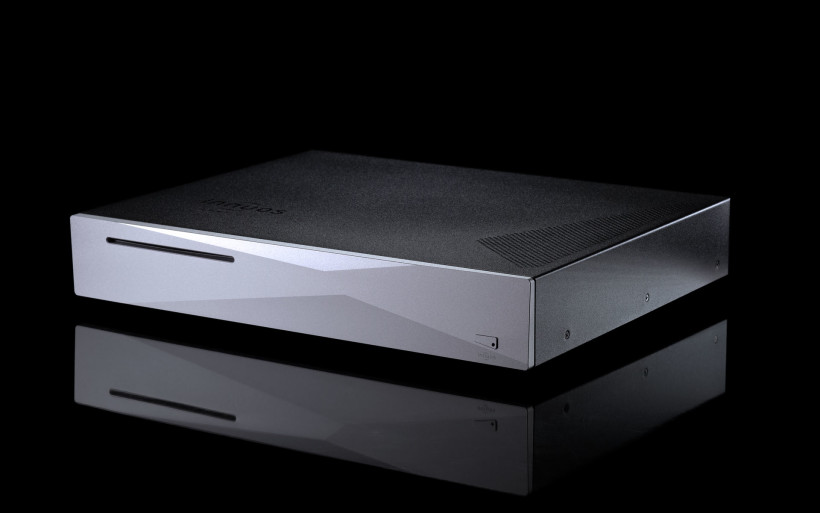 This report’s machine is an audio server designed to distribute digital music exclusively via wired network pipeline within a household’s LAN. Team Innuos sees WiFi as too noisy to bother, which puts their work up there with products by i.e. fidata and Lumin, thus hardware built specifically with sound quality as top priority. Although profiled very much alike, ZENith Mk3 on functionality sits a cut above my daily driver and Lumin’s platforms. It sports an internal SSD storage just as my HFAS-S10U deck, but also is powerful enough to operate as a Roon Core/Bridge device and its in-built optical drive allows one to easily rip silver discs.
This report’s machine is an audio server designed to distribute digital music exclusively via wired network pipeline within a household’s LAN. Team Innuos sees WiFi as too noisy to bother, which puts their work up there with products by i.e. fidata and Lumin, thus hardware built specifically with sound quality as top priority. Although profiled very much alike, ZENith Mk3 on functionality sits a cut above my daily driver and Lumin’s platforms. It sports an internal SSD storage just as my HFAS-S10U deck, but also is powerful enough to operate as a Roon Core/Bridge device and its in-built optical drive allows one to easily rip silver discs.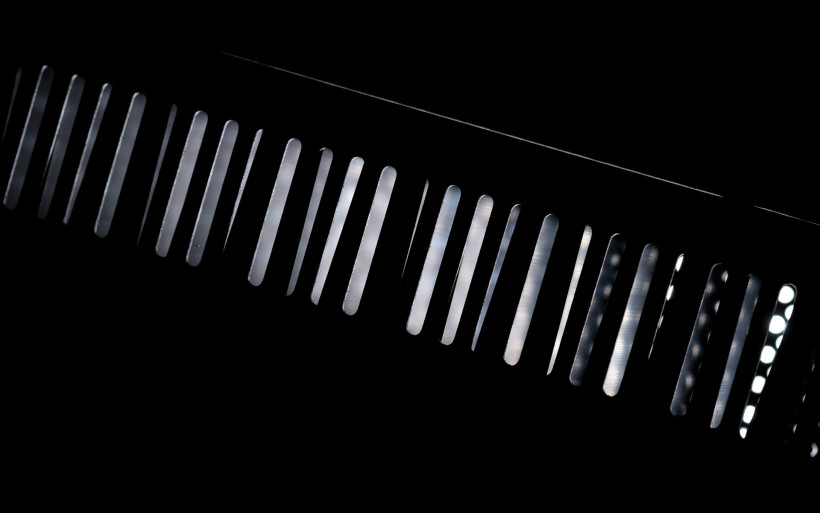 Innuos ZENith Mk3 measures (W x H x D) 420 x 70 x 320mm and weighs healthy nine kilograms. Although regularly shaped and sized, it’s also heavy enough to imply a non-standard PSU plot inside, whereas massive aluminium front milled to comprise several differently angled planes nets modern and utilitarian visual. A CD slot and the secondary on/off switch with one multi-coloured LED embedded, are all there is to it. Many similar devices to some extent rely on displays and buttons, but after a year spent with fidata’s deck I honestly don’t miss any such additions. Their absence on today’s minimalist front panel is what in effect turned it into one sharply dressed looker. If its silver forehead doesn’t float your boat, a fully black version is available at no extra cost, which is good.
Innuos ZENith Mk3 measures (W x H x D) 420 x 70 x 320mm and weighs healthy nine kilograms. Although regularly shaped and sized, it’s also heavy enough to imply a non-standard PSU plot inside, whereas massive aluminium front milled to comprise several differently angled planes nets modern and utilitarian visual. A CD slot and the secondary on/off switch with one multi-coloured LED embedded, are all there is to it. Many similar devices to some extent rely on displays and buttons, but after a year spent with fidata’s deck I honestly don’t miss any such additions. Their absence on today’s minimalist front panel is what in effect turned it into one sharply dressed looker. If its silver forehead doesn’t float your boat, a fully black version is available at no extra cost, which is good.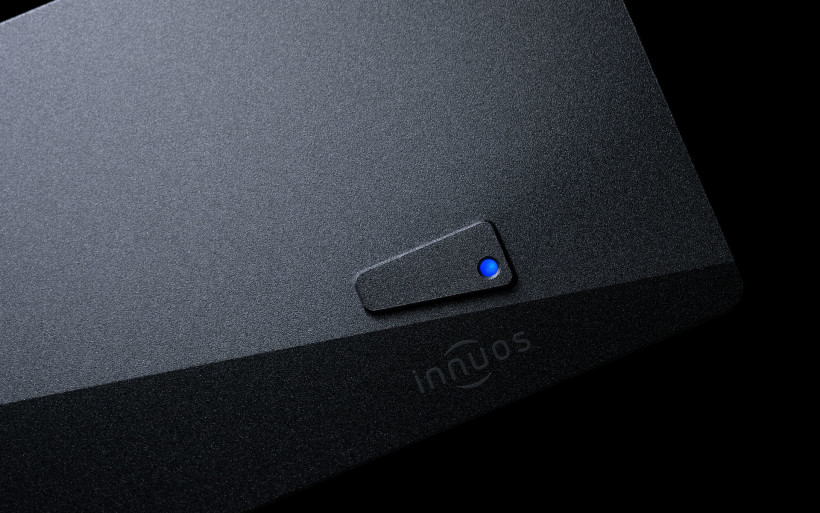 Innuos ZENith Mk3’s U-shaped steel hood features numerous perforations locked in a triangular shape, strategically located on top near the right ledge. That’s what provides venting for internal radiator just below. The product’s rear houses an IEC inlet with a self-replaceable fuse and the main on/off switch. The nameplate next in line lists design and handmade assembly respectively in England and Portugal. Available socketry further to the right includes one service input based on HDMI and two USB type A ports; the blue USB3.0 labeled as a backup accepts external storage devices, whereas its 2.0 neighbour sends data to a DAC. Two differently purposed RJ45 sockets allow Innuos ZENith Mk3 to operate as an all-in-one network storage/player for a D/A machine, or only a music storage married to a standalone streamer of choice. On this count today’s is similar to my fidata deck, but their underbellies differ. The former has one vented area and sits on three anti-vibration pucks, installed asymmetrically to support components most prone to microphonics. Each footer’s base, most likely made of POM, sports three rubber hemispheres in direct contact with surface underneath. This is thus a soft solution with some springy action involved.
Innuos ZENith Mk3’s U-shaped steel hood features numerous perforations locked in a triangular shape, strategically located on top near the right ledge. That’s what provides venting for internal radiator just below. The product’s rear houses an IEC inlet with a self-replaceable fuse and the main on/off switch. The nameplate next in line lists design and handmade assembly respectively in England and Portugal. Available socketry further to the right includes one service input based on HDMI and two USB type A ports; the blue USB3.0 labeled as a backup accepts external storage devices, whereas its 2.0 neighbour sends data to a DAC. Two differently purposed RJ45 sockets allow Innuos ZENith Mk3 to operate as an all-in-one network storage/player for a D/A machine, or only a music storage married to a standalone streamer of choice. On this count today’s is similar to my fidata deck, but their underbellies differ. The former has one vented area and sits on three anti-vibration pucks, installed asymmetrically to support components most prone to microphonics. Each footer’s base, most likely made of POM, sports three rubber hemispheres in direct contact with surface underneath. This is thus a soft solution with some springy action involved.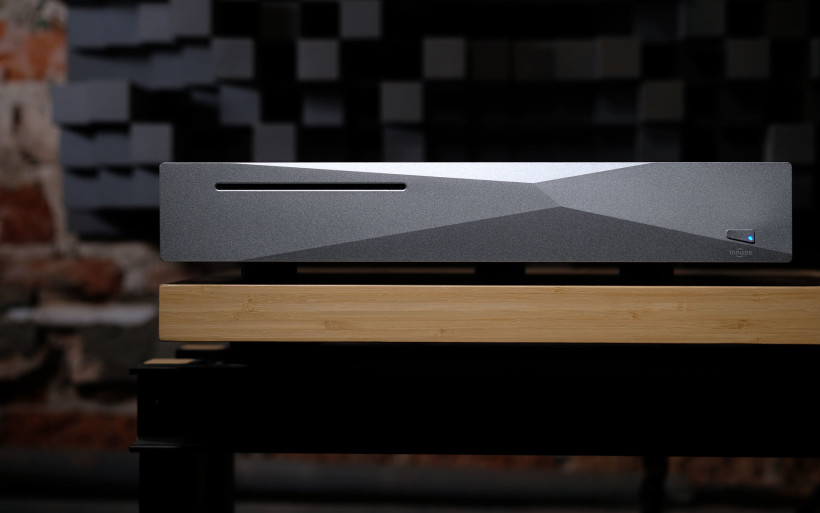 Innuos ZENith Mk3’s inside to quite an extent resembles internals found in a regular PC. It’s in fact a desktop computer to begin with, but heavily customized with sound quality on mind. Underneath its bonnet there’s a large anti-vibration compound, a IEC inlet connects to a medical-grade mains filter and a power supply just next to it looks like stuff proper audio devices oftentimes run on. This PSU was designed by Dr. Sean Jacobs (of Custom HiFi Cables Ltd.), is linear and incorporates a large toroidal transformer with three secondary windings connected to a PCB with rectifiers, a battery of low-noise voltage regulators fixed to a large heatsink, six big filtering caps by Mundorf and multiple smaller ones by Wima and Nichicon. Three separate and clean voltages to power critical circuits was the goal. A rack subject to the anti-vibration treatment houses an optical drive by TEAC on top, whereas Intel’s 1TB SSD sits below. If that’s not enough space, at extra cost the product can be had with 2/4TB of storage. If you wonder why SSD and not HDD, the former is free from moving parts hence better for the job, not to mention substantially faster access times. A Mini-ITX motherboard by SuperMicro has its clocks optimized, sources of EMI physically removed, Intel’s N4200 CPU embedded and 8GB RAM by Crucial installed. These components are all low-voltage hence quiet, but it turns out that sufficiently powerful for server duties. Digital outputs decouple via isolation transformers and are powered from a separate line from what I can tell.
Innuos ZENith Mk3’s inside to quite an extent resembles internals found in a regular PC. It’s in fact a desktop computer to begin with, but heavily customized with sound quality on mind. Underneath its bonnet there’s a large anti-vibration compound, a IEC inlet connects to a medical-grade mains filter and a power supply just next to it looks like stuff proper audio devices oftentimes run on. This PSU was designed by Dr. Sean Jacobs (of Custom HiFi Cables Ltd.), is linear and incorporates a large toroidal transformer with three secondary windings connected to a PCB with rectifiers, a battery of low-noise voltage regulators fixed to a large heatsink, six big filtering caps by Mundorf and multiple smaller ones by Wima and Nichicon. Three separate and clean voltages to power critical circuits was the goal. A rack subject to the anti-vibration treatment houses an optical drive by TEAC on top, whereas Intel’s 1TB SSD sits below. If that’s not enough space, at extra cost the product can be had with 2/4TB of storage. If you wonder why SSD and not HDD, the former is free from moving parts hence better for the job, not to mention substantially faster access times. A Mini-ITX motherboard by SuperMicro has its clocks optimized, sources of EMI physically removed, Intel’s N4200 CPU embedded and 8GB RAM by Crucial installed. These components are all low-voltage hence quiet, but it turns out that sufficiently powerful for server duties. Digital outputs decouple via isolation transformers and are powered from a separate line from what I can tell.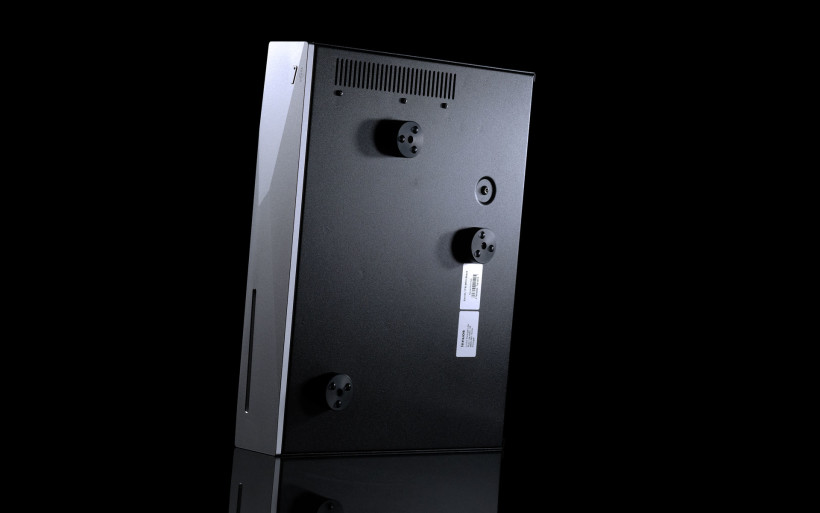 To simplify, team Innuos strived to create as noise-free environment for sensitive electronic parts inside their product as possible. Interference between these components, mechanical resonances and pollution from mains are culprits well-known for introducing harshness and grain to effectively truncate sound quality. However, hardware has to properly integrate with the no less important software. That’s why Innuos ZENith Mk3 runs on a customized BIOS and extensively stripped Linux OS, which incorporates LMS (Logitech Media Server) as music library. The manufacturer cleverly baptized this platform as InnuOS.
To simplify, team Innuos strived to create as noise-free environment for sensitive electronic parts inside their product as possible. Interference between these components, mechanical resonances and pollution from mains are culprits well-known for introducing harshness and grain to effectively truncate sound quality. However, hardware has to properly integrate with the no less important software. That’s why Innuos ZENith Mk3 runs on a customized BIOS and extensively stripped Linux OS, which incorporates LMS (Logitech Media Server) as music library. The manufacturer cleverly baptized this platform as InnuOS.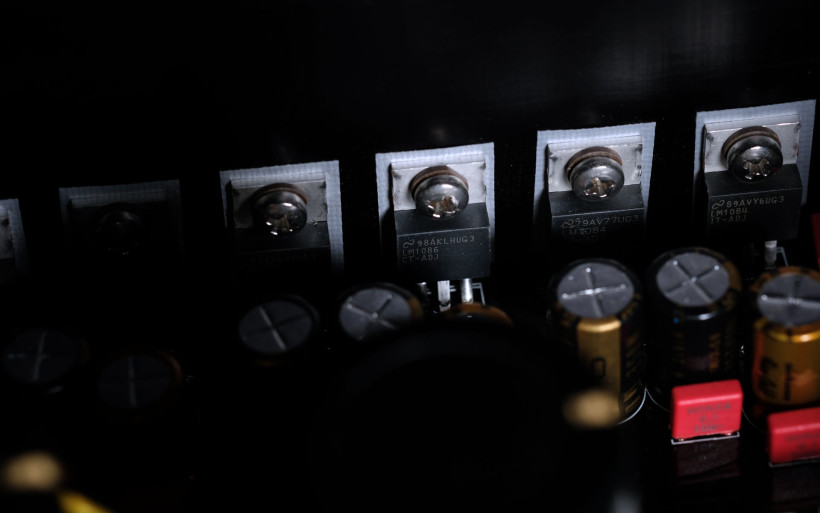 The product can work in five modes. If connected to a DAC via USB as a server/streamer machine, it relies on LMS and navigates through iPeng 9/OrangeSqueeze apps on iOS/Android respectively. It can be also used as an UPnP server for any standalone UPnP streamer; Lumin, Naim, Auralic, Linn, Moon etc. In this scenario Innuos suggests connecting a streamer of choice to ZENith MK3’s own squeaky clean streamer output instead of a router/switch. Today’s is also fit to work as a standalone Roon Core, a standalone Roon Bridge connected to a different brain, or the full Core/Bridge package. What Innuos ZENith Mk3 doesn’t do is UPnP rendering, which means that I couldn’t control it through the Lumin app just as I’ve been using my fidata platform. Team Portugal labeled LMS as more stable and with better streaming services integrated. Personally I use none, but among listed were Tidal, Qobuz, Spotify, Spotify Connect, BBC iPLayer Radio, Radio Paradise and TuneIn Radio Directories. I was told that many more are still to come.
The product can work in five modes. If connected to a DAC via USB as a server/streamer machine, it relies on LMS and navigates through iPeng 9/OrangeSqueeze apps on iOS/Android respectively. It can be also used as an UPnP server for any standalone UPnP streamer; Lumin, Naim, Auralic, Linn, Moon etc. In this scenario Innuos suggests connecting a streamer of choice to ZENith MK3’s own squeaky clean streamer output instead of a router/switch. Today’s is also fit to work as a standalone Roon Core, a standalone Roon Bridge connected to a different brain, or the full Core/Bridge package. What Innuos ZENith Mk3 doesn’t do is UPnP rendering, which means that I couldn’t control it through the Lumin app just as I’ve been using my fidata platform. Team Portugal labeled LMS as more stable and with better streaming services integrated. Personally I use none, but among listed were Tidal, Qobuz, Spotify, Spotify Connect, BBC iPLayer Radio, Radio Paradise and TuneIn Radio Directories. I was told that many more are still to come. In my daily struggles I roll with a separate router with no access to the web and am perfectly happy. Alhough ZENith Mk3 can work like so, it benefits from connection with the the www. In the event of failure, each Innuos device can be remotely accessed, troubleshooted and potentially rescued by its makes, which saves a customer from sending the product to its place of purchase. Besides, streaming services simply don’t work without Internet. It’s only fair to admit that I’m the fossil in this context. Folks up to speed with modern ways of listening to music aren’t.
In my daily struggles I roll with a separate router with no access to the web and am perfectly happy. Alhough ZENith Mk3 can work like so, it benefits from connection with the the www. In the event of failure, each Innuos device can be remotely accessed, troubleshooted and potentially rescued by its makes, which saves a customer from sending the product to its place of purchase. Besides, streaming services simply don’t work without Internet. It’s only fair to admit that I’m the fossil in this context. Folks up to speed with modern ways of listening to music aren’t.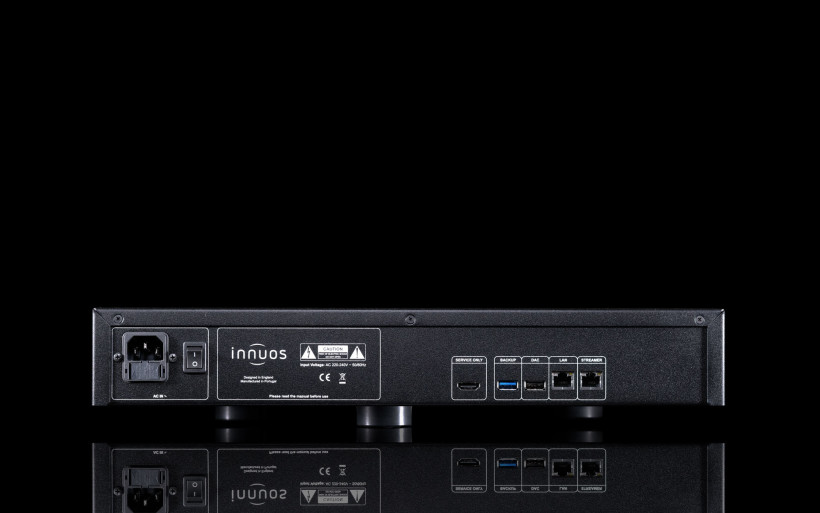 Shortly past unpacking and connecting the product, I had to input www.my.innuos.com in my smartphone’s browser to access the InnuOS control panel. Available things I could do in there are too numerous to list them all, but the most important options included a handy CD ripping interface, a LED colour change or its shutdown, my loaner’s mode selection, backup routine and file import. I didn’t lack anything and there were far more things to tinker with than I could possibly use, though my network needs have always been very limited. I was positively surprised how fast, responsive and stable Innuos ZENith Mk3 proved to be, and how easy and intuitive to operate in general. During its time at my place not even one stunt it pulled, always behaved predictably and was ready for action mere seconds past turning it on. It was clear that a lot of engineering, optimizing and coding went into this machine. It simply worked as intended. This sort of licked execution is partially what one pays for and also one of major reasons behind Innuos’ popularity.
Shortly past unpacking and connecting the product, I had to input www.my.innuos.com in my smartphone’s browser to access the InnuOS control panel. Available things I could do in there are too numerous to list them all, but the most important options included a handy CD ripping interface, a LED colour change or its shutdown, my loaner’s mode selection, backup routine and file import. I didn’t lack anything and there were far more things to tinker with than I could possibly use, though my network needs have always been very limited. I was positively surprised how fast, responsive and stable Innuos ZENith Mk3 proved to be, and how easy and intuitive to operate in general. During its time at my place not even one stunt it pulled, always behaved predictably and was ready for action mere seconds past turning it on. It was clear that a lot of engineering, optimizing and coding went into this machine. It simply worked as intended. This sort of licked execution is partially what one pays for and also one of major reasons behind Innuos’ popularity.
Sound
In order to review Innuos ZENith Mk3, either this one or fidata HFAS1-S10U handled storage and transport duties, then a LampizatOr Pacific DAC (KR Audio T-100/Living Voice 300B + KR Audio 5U4G Ltd. Ed.) took over to pass the signal to a Kinki Studio EX-M1 or Trilogy 925. From there a Boenicke Audio S3 speaker cable stepped in to connect to Boenicke Audio W11SE+ speakers. Both network devices were fed by two LessLoss C-MARCs from a GigaWatt PC-3 SE EVO+ power conditioner, fronted by the same manufacturer’s LC-3 EVO cable. Interconnects and remaining power cords used were respectively Boenicke Audio IC3 CG and Ansuz Mainz A2. The USB chain included the full iFi audio stack; micro iUSB3.0, nano iGalvanic3.0 plus three Mercury USB cables in-between these boxes.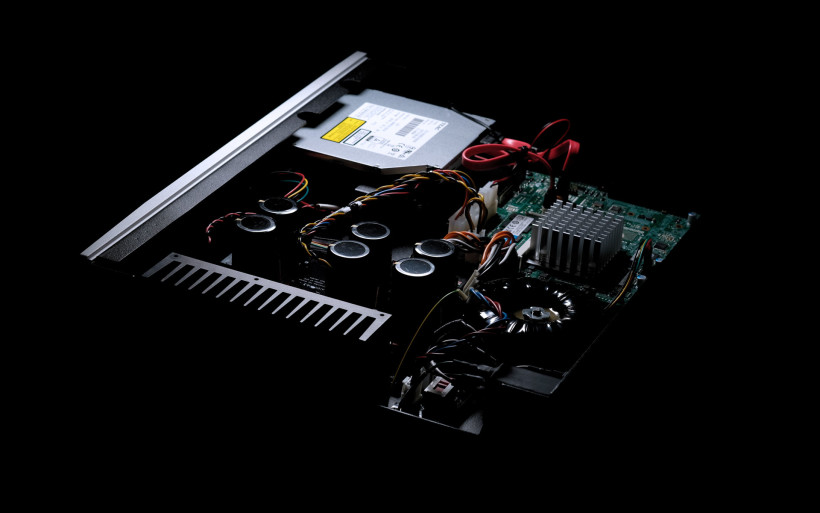 Of all usage options the Innuos ZENith Mk3 provided, one in particular seemed the most practical and realistic. I imagined that most people would buy this product as an all-in-one network machine very much similar to my HFAS1-S10U. Due to their own internal SSD storages, it made far more sense to compare both these decks as standalone units, instead of turning one as an audiophile NAS for the other. That’s why my work narrowed down mainly to shifts between listed platforms as many times as it was necessary to get a proper aural fix. During all comparisons based on network playback I don’t use any streaming services, which is why I had to move some music from my daily driver to today’s own digital warehouse.
Of all usage options the Innuos ZENith Mk3 provided, one in particular seemed the most practical and realistic. I imagined that most people would buy this product as an all-in-one network machine very much similar to my HFAS1-S10U. Due to their own internal SSD storages, it made far more sense to compare both these decks as standalone units, instead of turning one as an audiophile NAS for the other. That’s why my work narrowed down mainly to shifts between listed platforms as many times as it was necessary to get a proper aural fix. During all comparisons based on network playback I don’t use any streaming services, which is why I had to move some music from my daily driver to today’s own digital warehouse.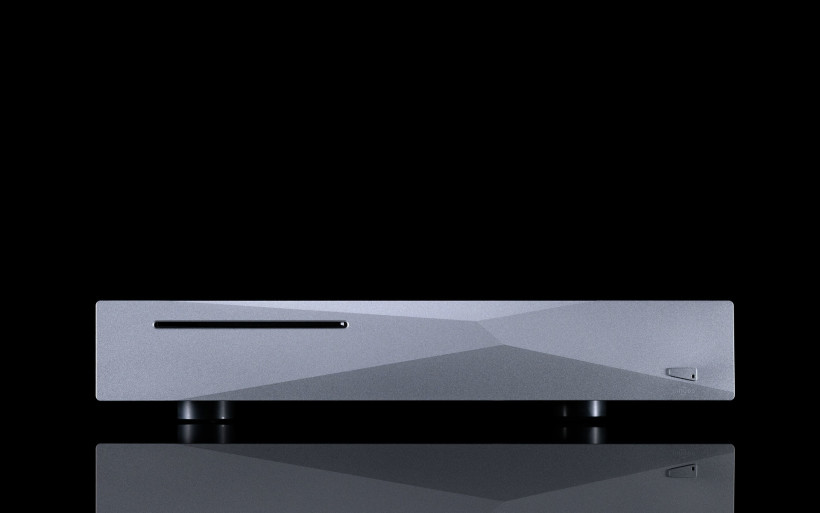 Although the ZENith Mk3 relied on iPeng 9 and Lumin’s software handled the fidata, this didn’t matter. As handy UI for network products as they are, both apps don’t partake in audio data exchange within a setup, hence consequently have no impact on sonics. At least I haven’t yet heard any sound quality shifts between several control apps tested in case of my fidata. All in all, two cable swaps – one USB for data and one Ethernet for LAN – was all I had to do to switch between the Innuos and my daily network device.
Although the ZENith Mk3 relied on iPeng 9 and Lumin’s software handled the fidata, this didn’t matter. As handy UI for network products as they are, both apps don’t partake in audio data exchange within a setup, hence consequently have no impact on sonics. At least I haven’t yet heard any sound quality shifts between several control apps tested in case of my fidata. All in all, two cable swaps – one USB for data and one Ethernet for LAN – was all I had to do to switch between the Innuos and my daily network device.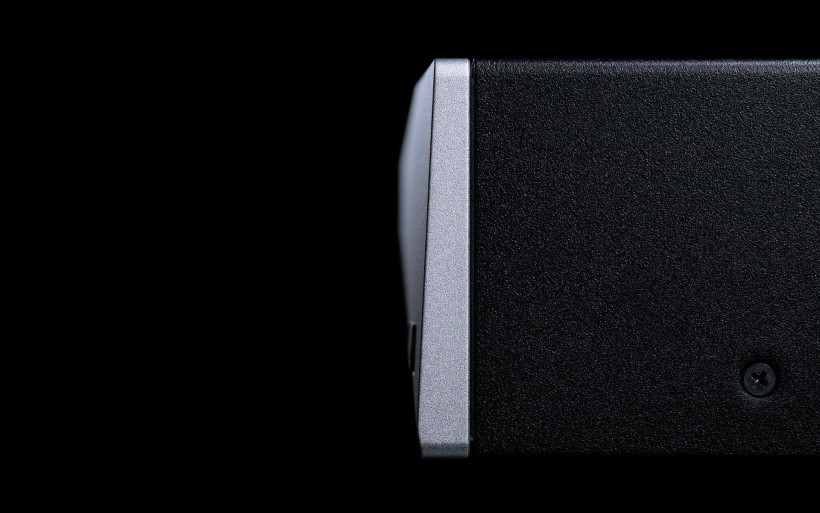 The fidata HFAS1-S10U review ended with our ‘Victor’ award for a reason. Prior to this machine’s arrival, I relied on a regular laptop loaded with Foobar2000 set to upsample everything to DSD, which simply worked with LampizatOr Golden Gate DAC I owned at that time. ‘If it ain’t broke, don’t fix it!’ is what I thought back then, but more importantly I wasn’t aware of how much of a bottleneck that Asus laptop truly was. It’s fair to say that lack of exposure to substantially better digital transports kept me in the blissfully unconscious state for many years. LampizatOr’s own SuperKomputer platform, reviewed in its beta stage in September 2016, already opened my eyes to quite a degree, but the real game changer was the fidata. To quote myself, this Japanese stunner crapped on my laptop on each count I could think of, and did so evidently enough to pursue it later on.
The fidata HFAS1-S10U review ended with our ‘Victor’ award for a reason. Prior to this machine’s arrival, I relied on a regular laptop loaded with Foobar2000 set to upsample everything to DSD, which simply worked with LampizatOr Golden Gate DAC I owned at that time. ‘If it ain’t broke, don’t fix it!’ is what I thought back then, but more importantly I wasn’t aware of how much of a bottleneck that Asus laptop truly was. It’s fair to say that lack of exposure to substantially better digital transports kept me in the blissfully unconscious state for many years. LampizatOr’s own SuperKomputer platform, reviewed in its beta stage in September 2016, already opened my eyes to quite a degree, but the real game changer was the fidata. To quote myself, this Japanese stunner crapped on my laptop on each count I could think of, and did so evidently enough to pursue it later on.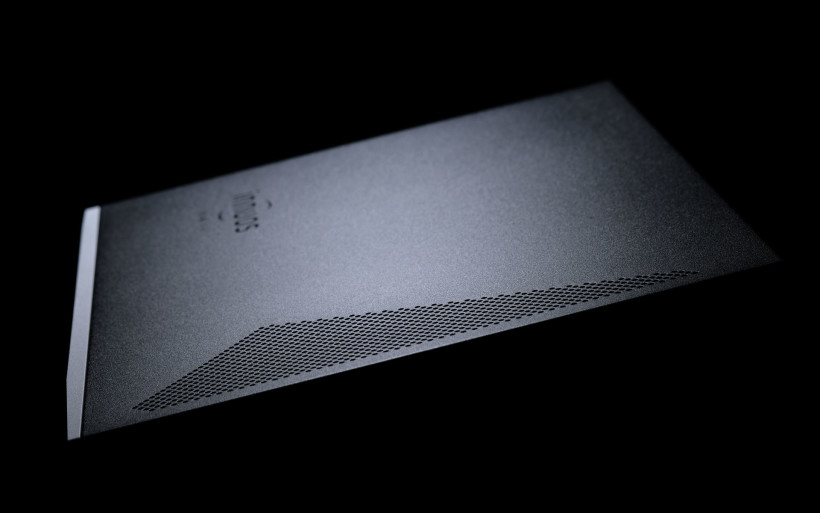 Its fabulous visual and overall performance aside, the HFAS1-S10U granted me tremendous insight into the importance of digital data prior to its route to a DAC. A transport is the place where music is born. If poor at this stage, such signal later on won’t be fixed. Transformed and amplified, it’s what hardware downstream has to work with. The tired-but-true ‘garbage in, garbage out’ phrase in audio is not meaningless, bad recordings auditioned on revealing setups will still sound bad, and the same rule applies to transports. Put shortly, they’re just as relevant and subject to quality differences as any other major component. To explain what this actually means, let me just say that disparities between the HFAS1-S10U and my Asus were anything but small and went far beyond tonal, temperature or imaging shifts. The former showed clearly how matte, lifeless, chiseled, grainy, choppy, itchy, artificial, texturally flat, processed and unnatural the latter transport truly was. In this context the fidata to quite an extent behaved like a fine turntable deck. Its most prominent features contributed to the very much analog alike experience I previously deemed as not really possible with digital machines. That’s what caught me off guard the most.
Its fabulous visual and overall performance aside, the HFAS1-S10U granted me tremendous insight into the importance of digital data prior to its route to a DAC. A transport is the place where music is born. If poor at this stage, such signal later on won’t be fixed. Transformed and amplified, it’s what hardware downstream has to work with. The tired-but-true ‘garbage in, garbage out’ phrase in audio is not meaningless, bad recordings auditioned on revealing setups will still sound bad, and the same rule applies to transports. Put shortly, they’re just as relevant and subject to quality differences as any other major component. To explain what this actually means, let me just say that disparities between the HFAS1-S10U and my Asus were anything but small and went far beyond tonal, temperature or imaging shifts. The former showed clearly how matte, lifeless, chiseled, grainy, choppy, itchy, artificial, texturally flat, processed and unnatural the latter transport truly was. In this context the fidata to quite an extent behaved like a fine turntable deck. Its most prominent features contributed to the very much analog alike experience I previously deemed as not really possible with digital machines. That’s what caught me off guard the most.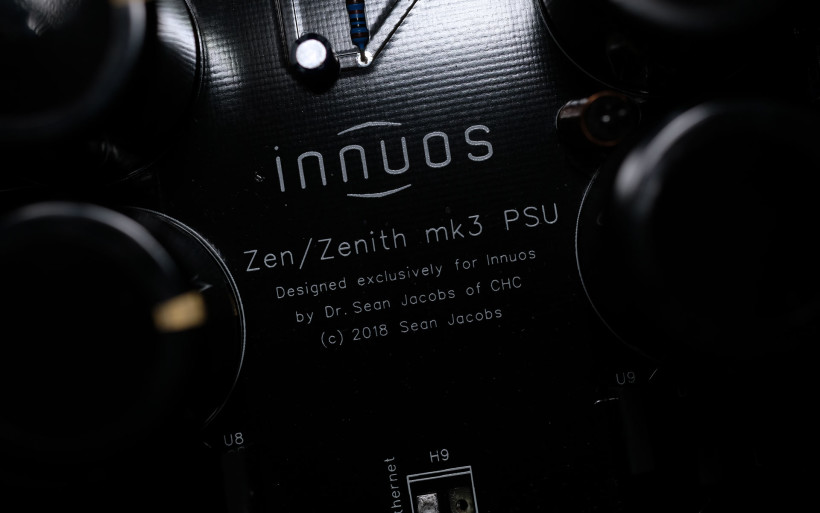 fidata HFAS1-S10U’s skirmishes against several digital transports had me convinced about its sonic profile built upon textural richness, saturation, expressiveness, calmness and virtual landscapes free from any grit and harshness. Geared towards sensuality, vividness and charm instead of magnifying imperfections, my daily driver happens to be somewhat biased as well. It’s not a resolution or agility monster, but rather a product voiced to present each track in enjoyably organic fashion in the first place. The same manufacturer’s similarly profiled HFAS1-XS20U deck additionally upped the ante on clarity, insight, openness and the lot. In effect it showed me that on these counts the quality envelope could be pushed a bit further. Having explained all this, now is the time to introduce Innuos ZENith Mk3. Its action versus my HFAS1-S10U was thoroughly interesting.
fidata HFAS1-S10U’s skirmishes against several digital transports had me convinced about its sonic profile built upon textural richness, saturation, expressiveness, calmness and virtual landscapes free from any grit and harshness. Geared towards sensuality, vividness and charm instead of magnifying imperfections, my daily driver happens to be somewhat biased as well. It’s not a resolution or agility monster, but rather a product voiced to present each track in enjoyably organic fashion in the first place. The same manufacturer’s similarly profiled HFAS1-XS20U deck additionally upped the ante on clarity, insight, openness and the lot. In effect it showed me that on these counts the quality envelope could be pushed a bit further. Having explained all this, now is the time to introduce Innuos ZENith Mk3. Its action versus my HFAS1-S10U was thoroughly interesting.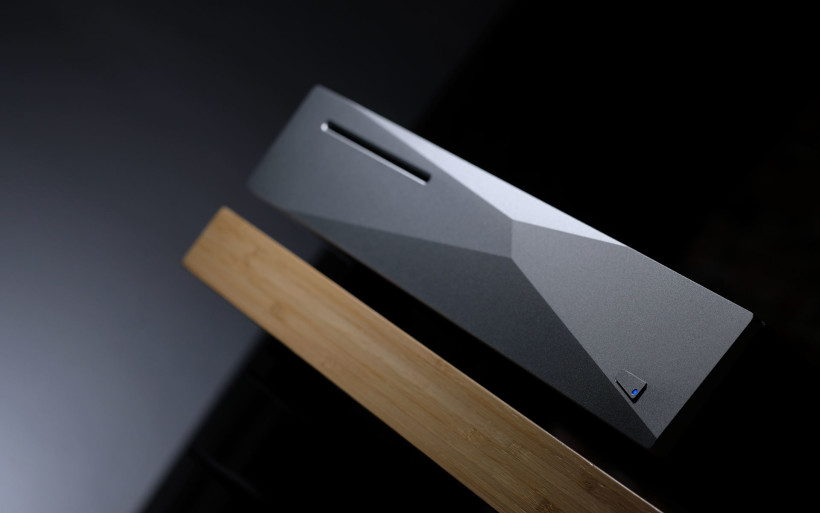 Top shelf digital transports excel on musical easygoingness, textural complexity, pristinely dark backdrop, smoothness and naturally delivered insight. These core features effectively discard tension, artificial tint, blur and itchiness, which fleshes out that particular analog alike aural liveliness and refinement many aficionados are sensitive to. But most importantly, this type of universal seasoning is the direct result of solid engineering related to power supply, OS optimizations and mechanical grounding. These measures not only are considered as critical for audio performance, but also are what sets apart audiophile digital transports from their mainstream equivalents. Having said all this, it took me minutes to understand that Innuos ZENith Mk3’s place was in the former group beyond any doubt. In fact, on noise removal it introduced itself as no less potent than my twice as costly reference platform. This fact alone says a lot about what team Portugal was able to achieve.
Top shelf digital transports excel on musical easygoingness, textural complexity, pristinely dark backdrop, smoothness and naturally delivered insight. These core features effectively discard tension, artificial tint, blur and itchiness, which fleshes out that particular analog alike aural liveliness and refinement many aficionados are sensitive to. But most importantly, this type of universal seasoning is the direct result of solid engineering related to power supply, OS optimizations and mechanical grounding. These measures not only are considered as critical for audio performance, but also are what sets apart audiophile digital transports from their mainstream equivalents. Having said all this, it took me minutes to understand that Innuos ZENith Mk3’s place was in the former group beyond any doubt. In fact, on noise removal it introduced itself as no less potent than my twice as costly reference platform. This fact alone says a lot about what team Portugal was able to achieve.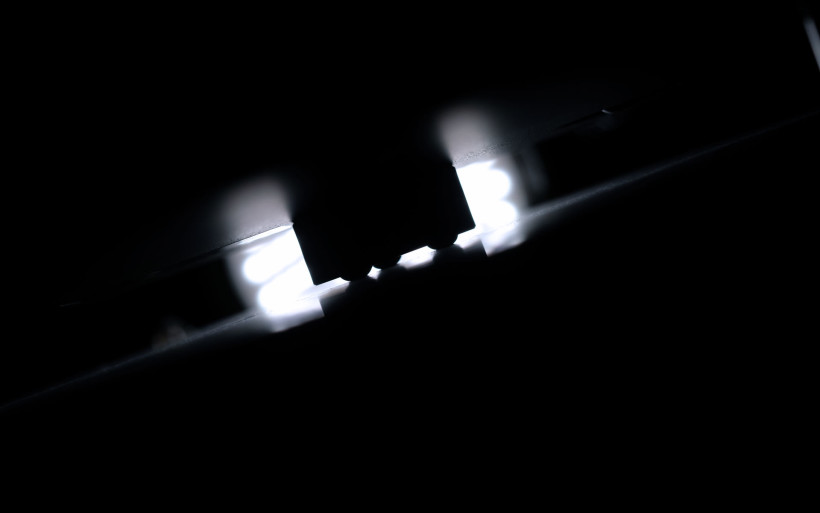 In spite of the same posh sonic backbone, not only today’s and fidata weren’t alike voiced, but their two distinctive flavours were mapped after mere several swaps. If my daily transport was among the mellow, rich, suave and somewhat sweet types, then the ZENitch Mk3’s take on the same job was more mechanical, fit, speedier and more powerful. The former operated via calmness and natural saturation, whereas the feistier latter sounded inherently more invigorating, direct, contoured and shinier. The Japanese was a tad more distant and darker, whereas the snappier Portuguese projected virtual sound sources a bit closer and more firmly outlined. To simplify, the fidata included more brush swings and less pencil work, whereas the ZENith MK3 reversed the order. These mood transitions from one to another were clear, however lack of the usual culprits in both cases was something of even greater importance. Neither the fidata was blurry, stuffy, withdrawn and sluggish, nor the Innuos sounded hot, itchy, opaque, thin and constantly revvy to render mysterious, ambient and gloomy parts of my playlist as oddly happy or nervous. Nothing of the sort happened. Although differently profiled, compared decks executed their jobs in similarly mature and composed fashion.
In spite of the same posh sonic backbone, not only today’s and fidata weren’t alike voiced, but their two distinctive flavours were mapped after mere several swaps. If my daily transport was among the mellow, rich, suave and somewhat sweet types, then the ZENitch Mk3’s take on the same job was more mechanical, fit, speedier and more powerful. The former operated via calmness and natural saturation, whereas the feistier latter sounded inherently more invigorating, direct, contoured and shinier. The Japanese was a tad more distant and darker, whereas the snappier Portuguese projected virtual sound sources a bit closer and more firmly outlined. To simplify, the fidata included more brush swings and less pencil work, whereas the ZENith MK3 reversed the order. These mood transitions from one to another were clear, however lack of the usual culprits in both cases was something of even greater importance. Neither the fidata was blurry, stuffy, withdrawn and sluggish, nor the Innuos sounded hot, itchy, opaque, thin and constantly revvy to render mysterious, ambient and gloomy parts of my playlist as oddly happy or nervous. Nothing of the sort happened. Although differently profiled, compared decks executed their jobs in similarly mature and composed fashion.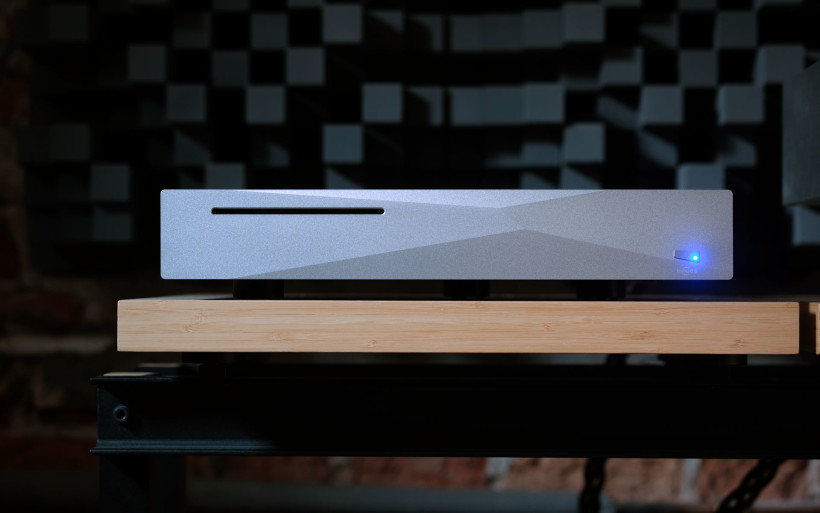 Upper echelon audio introduces quite the wiggle room for sonic finishing touches, but is never extreme. Top tier specimens behave uniformly well all across the board without any obvious downsides, which is exactly what this story’s two contestants did without a miss. Even in spite of being geared towards calmer ride, the fidata was feisty enough to handle jumpy repertoire without the sensation of running out of steam or compressed dynamic range, whereas the sportier ZENith Mk3 portrayed gentle female voices, subtle guitar parts and calm double bass swings as methodically resonant, slow and charming as it was necessary. I had no crave for anything in particular regardless of music thrown at these machines. Instead I embraced their two distinctive voicings one track at a time, to in effect very quickly liberate myself from thinking about a rather substantial price gap between them.
Upper echelon audio introduces quite the wiggle room for sonic finishing touches, but is never extreme. Top tier specimens behave uniformly well all across the board without any obvious downsides, which is exactly what this story’s two contestants did without a miss. Even in spite of being geared towards calmer ride, the fidata was feisty enough to handle jumpy repertoire without the sensation of running out of steam or compressed dynamic range, whereas the sportier ZENith Mk3 portrayed gentle female voices, subtle guitar parts and calm double bass swings as methodically resonant, slow and charming as it was necessary. I had no crave for anything in particular regardless of music thrown at these machines. Instead I embraced their two distinctive voicings one track at a time, to in effect very quickly liberate myself from thinking about a rather substantial price gap between them.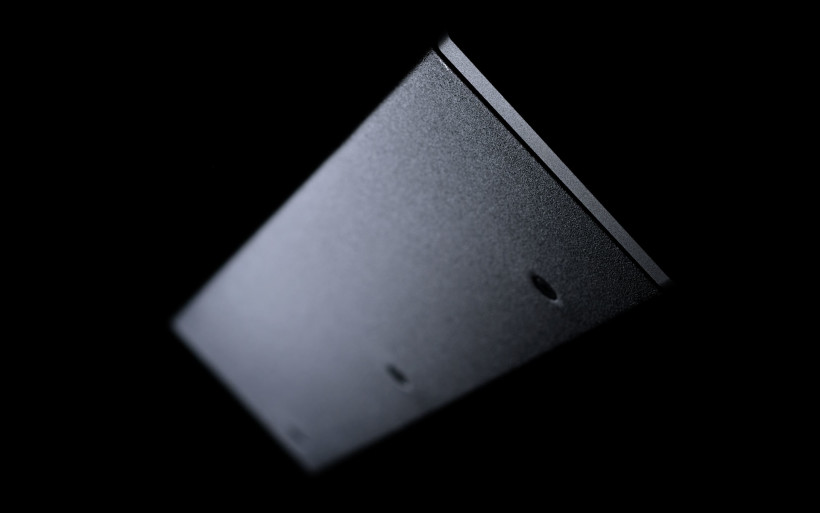 To equally enjoy two products on purely subjective level is a rare thing. This time around I almost got there. If I had to cherry-pick accordingly to my own biases, I’d have remained faithful to the fidata, but not as unequivocally as it’s usually the case. The Japanese sounded more organic, sweeter and it staged a bit deeper versus the Innuos. Sophistication, sonic eloquence, expressiveness, substance and gravity are its key fortes, and it so happens that my ears prioritize that sort of aroma over many other things. But even though the ZENith Mk3 effectively positioned itself a notch below on music infusing qualities, I’ll surely miss its resolve, clarity, openness and adrenaline. Today’s upper hand on agility and snap led to quite the evenhanded blow exchange all in all, but I took something extra from this fight. Nearly two years ago fidata’s own HFAS1-XS20U highlighted aspects my reference transport could be better at, and the Innuos did the same thing just now.
To equally enjoy two products on purely subjective level is a rare thing. This time around I almost got there. If I had to cherry-pick accordingly to my own biases, I’d have remained faithful to the fidata, but not as unequivocally as it’s usually the case. The Japanese sounded more organic, sweeter and it staged a bit deeper versus the Innuos. Sophistication, sonic eloquence, expressiveness, substance and gravity are its key fortes, and it so happens that my ears prioritize that sort of aroma over many other things. But even though the ZENith Mk3 effectively positioned itself a notch below on music infusing qualities, I’ll surely miss its resolve, clarity, openness and adrenaline. Today’s upper hand on agility and snap led to quite the evenhanded blow exchange all in all, but I took something extra from this fight. Nearly two years ago fidata’s own HFAS1-XS20U highlighted aspects my reference transport could be better at, and the Innuos did the same thing just now.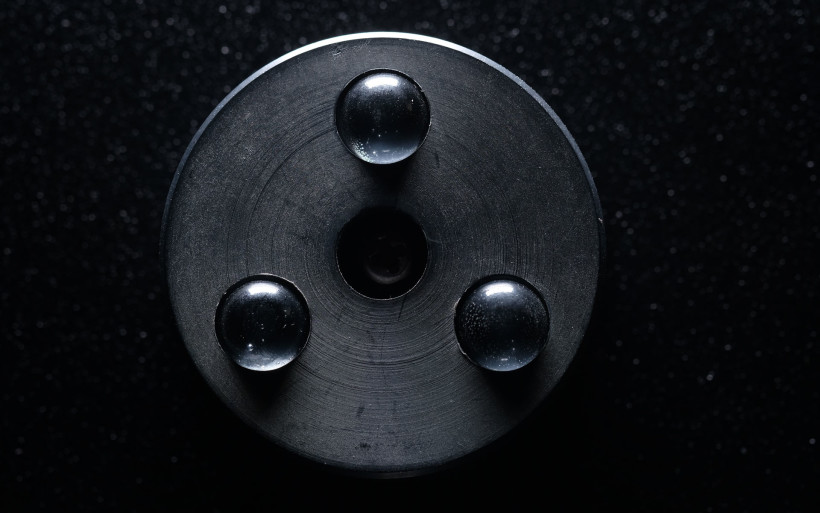 Once I mapped Innuos ZENith Mk3’s behaviour, it had to be exploited as a Roon Core device. Here it didn’t compete against the Japanese product but its own OS instead. In this scenario two major things changed; today’s USB connection naturally stepped down to make room for RJ45, and my Pacific DAC’s own Roon Bridge implementation based on Raspberry Pi was put against its clean USB input by Amanero. Data sent to the network module inside of the LampizatOr goes through the USB receiver board anyway, hence this route is in fact longer.
Once I mapped Innuos ZENith Mk3’s behaviour, it had to be exploited as a Roon Core device. Here it didn’t compete against the Japanese product but its own OS instead. In this scenario two major things changed; today’s USB connection naturally stepped down to make room for RJ45, and my Pacific DAC’s own Roon Bridge implementation based on Raspberry Pi was put against its clean USB input by Amanero. Data sent to the network module inside of the LampizatOr goes through the USB receiver board anyway, hence this route is in fact longer.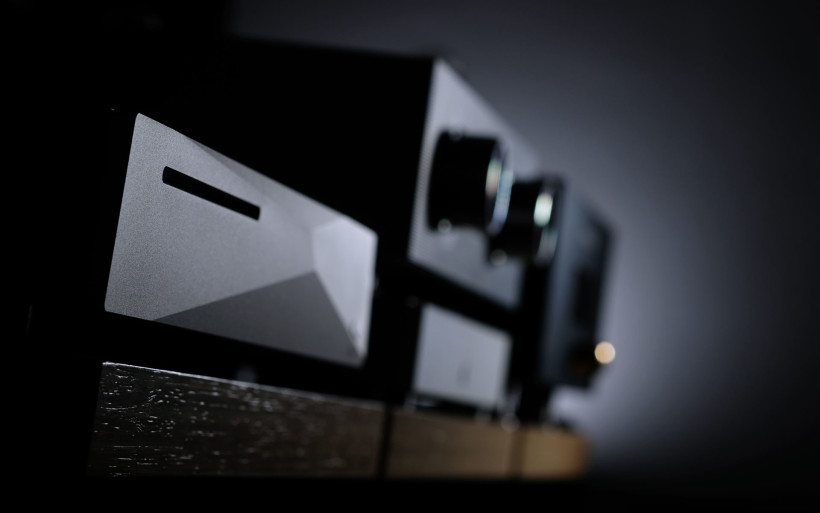 Differences between InnuOS and Roon’s engine list software optimizations and RAM management as impactful on sound quality. I’m no buffering specialist, but from what I understood Innuos’ own Linux twist was set to allocate four gigs of this memory exclusively for playback purposes and avoid any data readout from its internal SSD. Having this on mind, InnuOS better than Roon on sonics was my guess if not a mild bias. Aural inspection indeed led me to the conclusion that the former selection sounded more fluently, sported darker backdrop, was a touch heftier and less mechanical all in all, but disparities weren’t big.
Differences between InnuOS and Roon’s engine list software optimizations and RAM management as impactful on sound quality. I’m no buffering specialist, but from what I understood Innuos’ own Linux twist was set to allocate four gigs of this memory exclusively for playback purposes and avoid any data readout from its internal SSD. Having this on mind, InnuOS better than Roon on sonics was my guess if not a mild bias. Aural inspection indeed led me to the conclusion that the former selection sounded more fluently, sported darker backdrop, was a touch heftier and less mechanical all in all, but disparities weren’t big. With throwaway cables engaged, my DAC enjoyed the ZENith Mk3’s USB out a bit better versus its RJ45 out plus Roon Core mode. Naturally the quality gap grew bigger with the full iFi stack in the USB pipeline as predicted, to the point of being rather easily audible. Still, I lacked a good LAN cable. Who knows? Perhaps such a leash would potentially decrease the quality fissure enough to ditch iFi’s USB line with no regrets? After several adventures with such products I think that this could happen. But guesswork aside, the takeaway was clear. As a Roon Core device, today’s didn’t sound bluntly inferior in comparison to its action based on InnuOS handled by the iPeng 9 app. With no extra USB sorters involved I’d say it was a small step behind. At a cost of my entire setup’s performance hit this tiny, most likely I’d switch to Roon’s enjoyable environment.
With throwaway cables engaged, my DAC enjoyed the ZENith Mk3’s USB out a bit better versus its RJ45 out plus Roon Core mode. Naturally the quality gap grew bigger with the full iFi stack in the USB pipeline as predicted, to the point of being rather easily audible. Still, I lacked a good LAN cable. Who knows? Perhaps such a leash would potentially decrease the quality fissure enough to ditch iFi’s USB line with no regrets? After several adventures with such products I think that this could happen. But guesswork aside, the takeaway was clear. As a Roon Core device, today’s didn’t sound bluntly inferior in comparison to its action based on InnuOS handled by the iPeng 9 app. With no extra USB sorters involved I’d say it was a small step behind. At a cost of my entire setup’s performance hit this tiny, most likely I’d switch to Roon’s enjoyable environment.
Summary
Audio playback based on files came a long way since its infancy days. Early machines designed with this task prioritized were troublesome, sounded nowhere near as good as they do now, didn’t look as nice, surely weren’t as stable, and required quite the know-how to handle. It took years, but finally this inaccessible geeky stuff blossomed into easy to use versatile audiophile packages such as today’s. Innuos ZENith Mk3 not only is a fine example of how it should be done, but it also emerged as the most accomplished of its kind I came across.
Many network audio devices gladly rely on buttons and displays, however Innuos ZENith Mk3 renders them unnecessary and on functionality ticks all checkboxes with no questions asked. Its minimalist bling-free modern look scores high by my standards and so does assembly. Today’s goes the extra mile with its ripping drive, fully embedded Roon platform, broad compliance with other devices, and hassle-free operation. Keen execution of all tasks without hiccups, nearly instant readiness and overall stability are clear indicators of thoroughly polished engineering work, which is admirable. Considering all this, very shortly I stopped missing UPnP rendering.
Innuos ZENith Mk3 on functionality shines as brightly as it does on sonic performance. All its noise removal traits kept the usual digital culprits at the door and provided firm substructure for tonal evenness, fluency, spatial might and wide dynamic contrasts, which in effect resulted in aural experience many seasoned aficionados would associate with costly boutique music boxes and not PCs. But overall balance is where Innuos ZENith Mk3 truly excels. Not only it finely connects audiophile sonics with mainstream needs, but also is priced attractively considering what it does and how. If I hadn’t had my fidata deck, I’d ask for an invoice. ‘Til next time!
Associated Equipment:
- Amplifier: Trilogy 925, Kinki Studio EX-M1
- DAC: LampizatOr Pacific (KR Audio T-100 / Living Voice 300B + KR Audio 5U4G Ltd. Ed.)
- Speakers: Boenicke Audio W11 SE+
- Transport: fidata HFAS1-S10U
- Headphones: HifiMan Susvara
- Speaker cables: Boenicke Audio S3, LessLoss C-MARC
- Interconnects: Boenicke Audio IC3 CG
- Power components: Gigawatt PC-3 SE EVO+, Gigawatt PF-2 + Gigawatt LC-2 MK2 + Audiomica Laboratory Ness Excellence/LessLoss C-MARC
- Rack: Franc Audio Accesories Wood Block Rack
- Music: NativeDSD, Roon
Retail prices of reviewed components in EU (incl. tax):
- Innuos ZENith Mk3 1/2/4TB: €3’399/3’899/4’499
Manufacturer: Innuos


